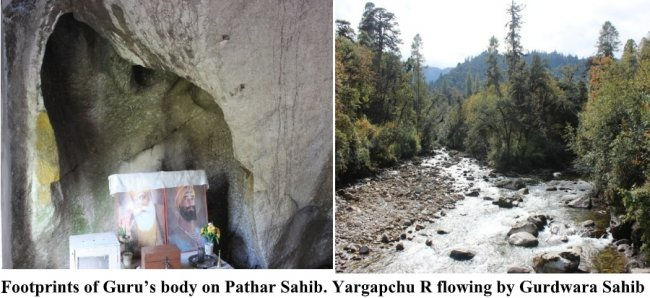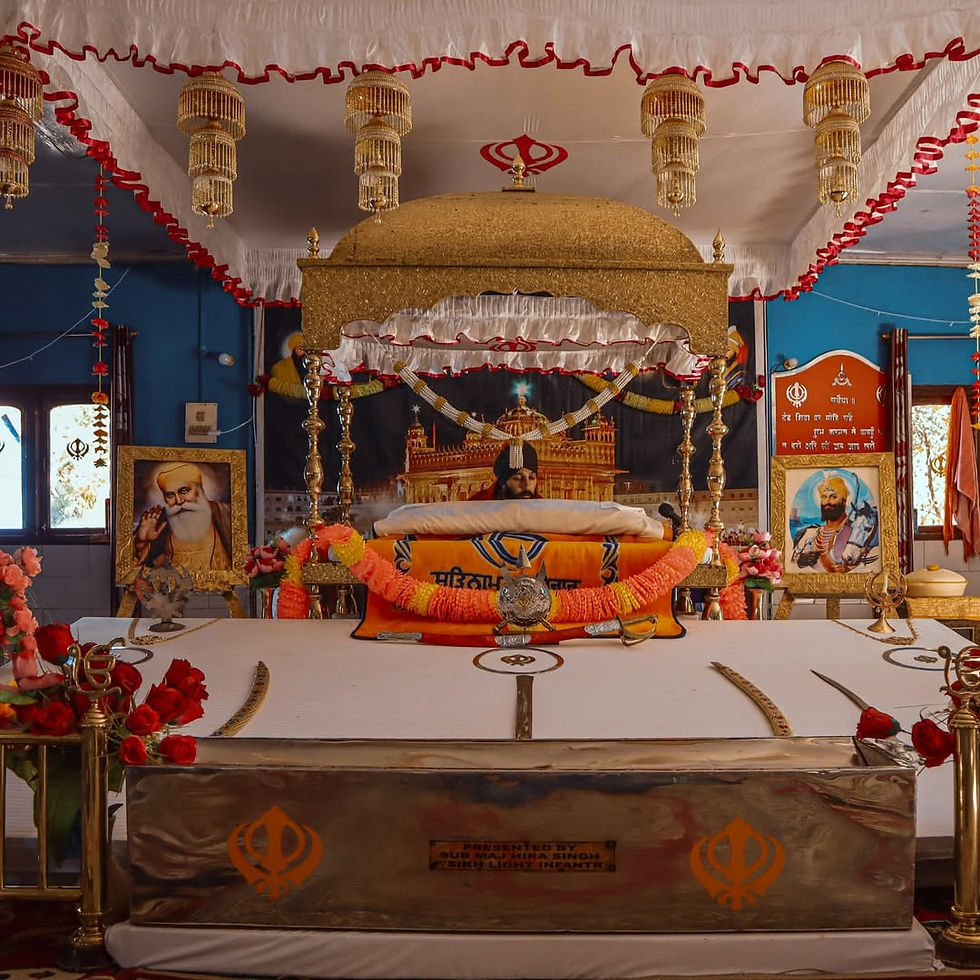Footsteps Through the Eastern Himalayas: Guru Nanak's Sacred Cave in Mechuka
- projects4711
- Sep 1
- 3 min read
High above the whispering pines and snow-fed rivers of Arunachal Pradesh, nestled within the serene valley of Mechuka, lies a spiritual sanctuary so remote, so profoundly still, it feels like a secret folded into the Himalayan wind. This is the Guru Nanak Cave—a hallowed recess in the earth that has, for over five centuries, preserved the silent echo of divine meditation. Here, legend and landscape entwine, telling the tale of a saint who walked far beyond borders to spread his message of oneness.
Where Faith Meets the Frontier
The journey to Mechuka is itself pleasant and adventure. Winding roads carve their way through dense forests and misty ridgelines, leading travelers to a village just 20 kilometers from the Indo-Tibet border. It is in this sacred solitude that Guru Nanak Dev, the founder of Sikhism, is believed to have paused during one of his epic Udasis—spiritual odysseys that took him across the subcontinent and beyond.

Local Memba tribespeople, practitioners of Tibetan Buddhism, remember him not just as a holy visitor but as Nanak Lama, a saintly figure embraced into their spiritual tapestry. Oral histories, handed down with reverence, describe how this enigmatic visitor from Punjab shared teachings, performed miracles, and meditated under a stone canopy now known as the Taposthan.
Legends Etched in Stone
Among the stories passed from lips to lore is the tale of a wild bear that once threatened Guru Nanak during his meditation. As the beast charged, a massive boulder miraculously lifted, forming a protective arch. The bear, thwarted by the divine intervention, fled into the woods. Today, pilgrims are shown the very rock—bearing indentations said to match the Guru's body—as proof of this holy occurrence.

Another mystical feature is a narrow cave passage believed to lead to the Bamchu stream, where Guru Nanak is said to have bathed. Tradition claims that only those of pure heart can pass through the tight stone corridor. Local rituals persist: close your eyes, whisper a prayer, and draw a pebble from the sacred stream—white for fulfillment, black for disappointment, and black-and-white for partial blessings.
The very landscape, adorned with fluttering prayer flags and the rustle of bamboo, becomes a living manuscript where belief is written in earth and air.
A Shared Spiritual Legacy
What sets the Guru Nanak Cave apart from other religious sites is its dual sanctity. For centuries, Memba Buddhists revered the spot as Pema Shelphug, a meditation site once blessed by Guru Rinpoche (Padmasambhava). Yet, in the 1980s, Sikh soldiers posted in Arunachal Pradesh recognized the legends of Nanak Lama and helped establish a modest Gurdwara nearby, preserving the memory of their Guru’s visit. With support from the Indian Army and local communities, this sacred fusion of Buddhist and Sikh reverence continues peacefully to this day.

Every March, villagers and visitors gather to honor Guru Nanak’s arrival in the valley. Oil lamps flicker beside the rock. Hymns mingle with Buddhist chants. It is not a place of division but of convergence—where spirituality transcends religious boundaries.
The Quiet Invitation
To step into Guru Nanak’s cave is to step back in time. There are no marble domes or gilded spires—only stone, moss, silence, and the intangible weight of something greater. This is a destination not measured in kilometers, but in devotion, effort, and awe.

As you descend through the canopy of fir and rhododendron, past moss-laced ladders and prayer-draped paths, the modern world falls away. What remains is a whisper from 500 years ago: a voice of peace, a call to unity, and the enduring presence of a traveler who sought not conquest, but communion.
The Guru Nanak Cave in Mechuka is not just a place to visit. It is a place to remember.

Travel Tip: Inner Line Permits (ILP) are required to visit Arunachal Pradesh. The best time to travel is between October and April. Reach Mechuka via Aalo (Along) by road, with the nearest airports at Pasighat or Dibrugarh. From Mechuka, the cave is a short drive and a 15–30 minute trek into the forest.
Sacred. Secluded. Shared. The cave stands as an enduring symbol of India’s spiritual pluralism—hidden in the Himalayas, yet open to all hearts.





Comments